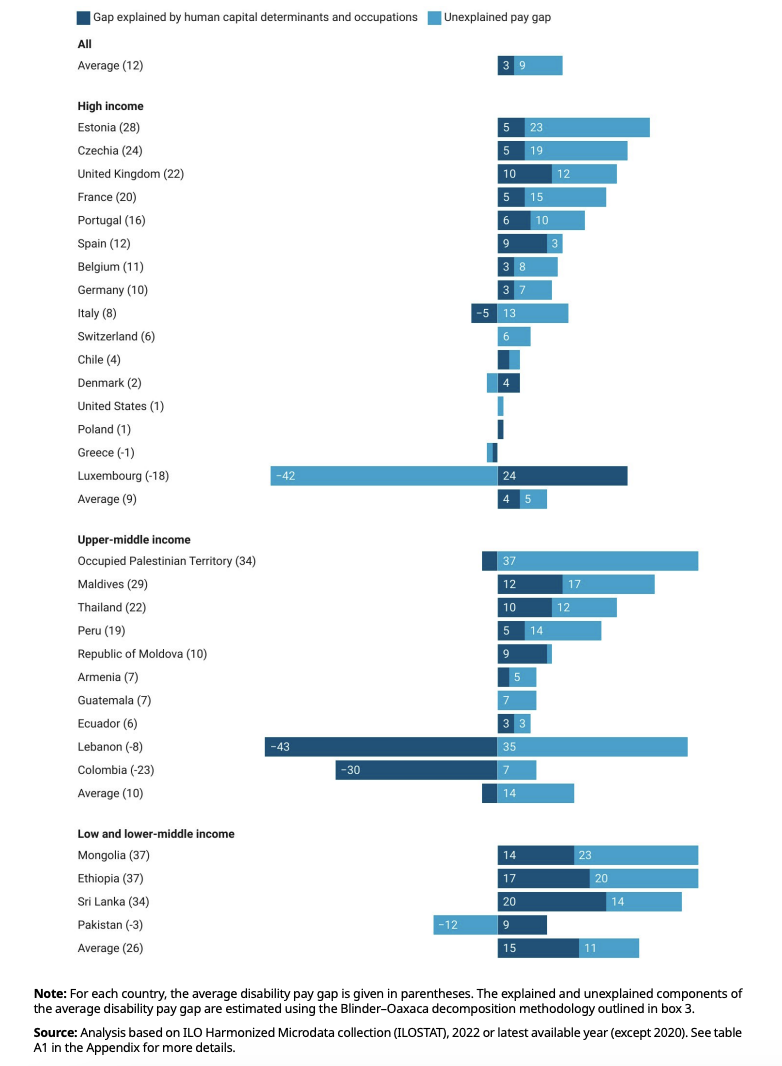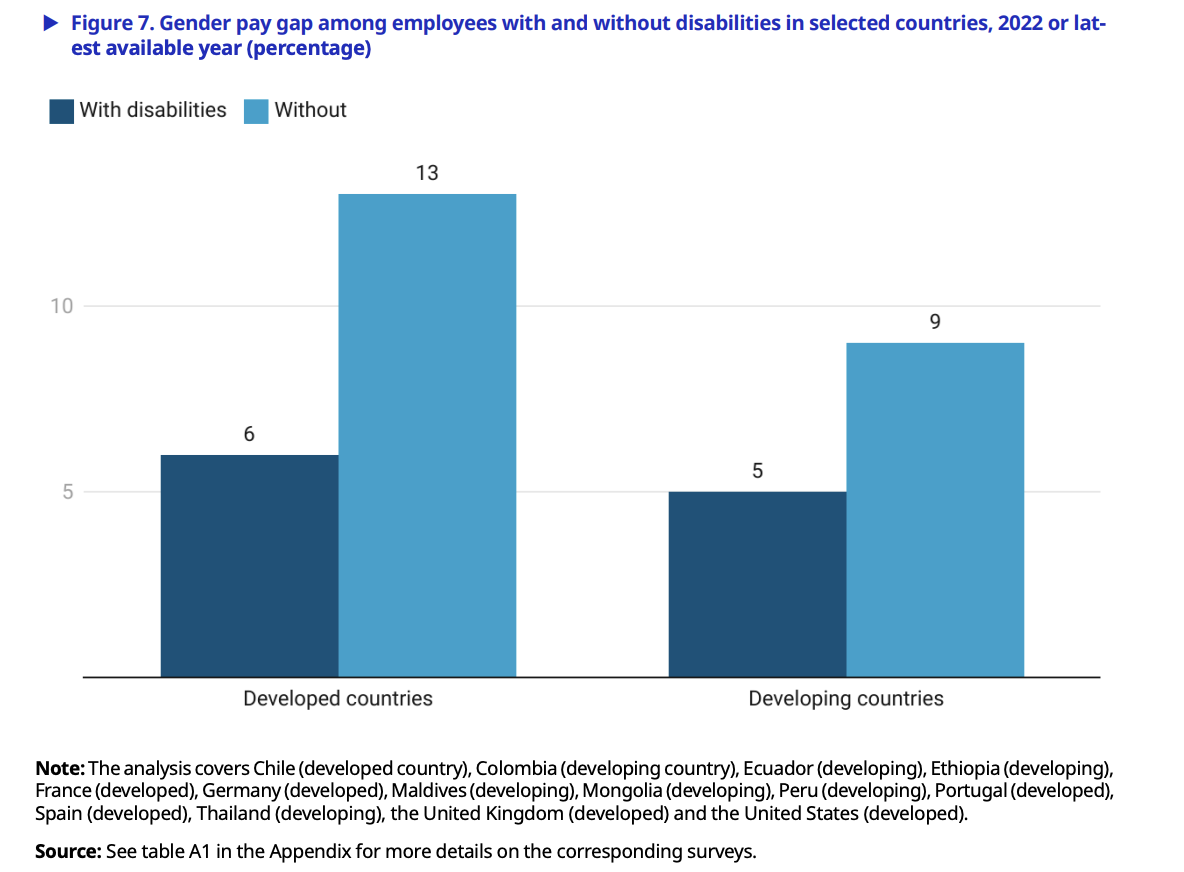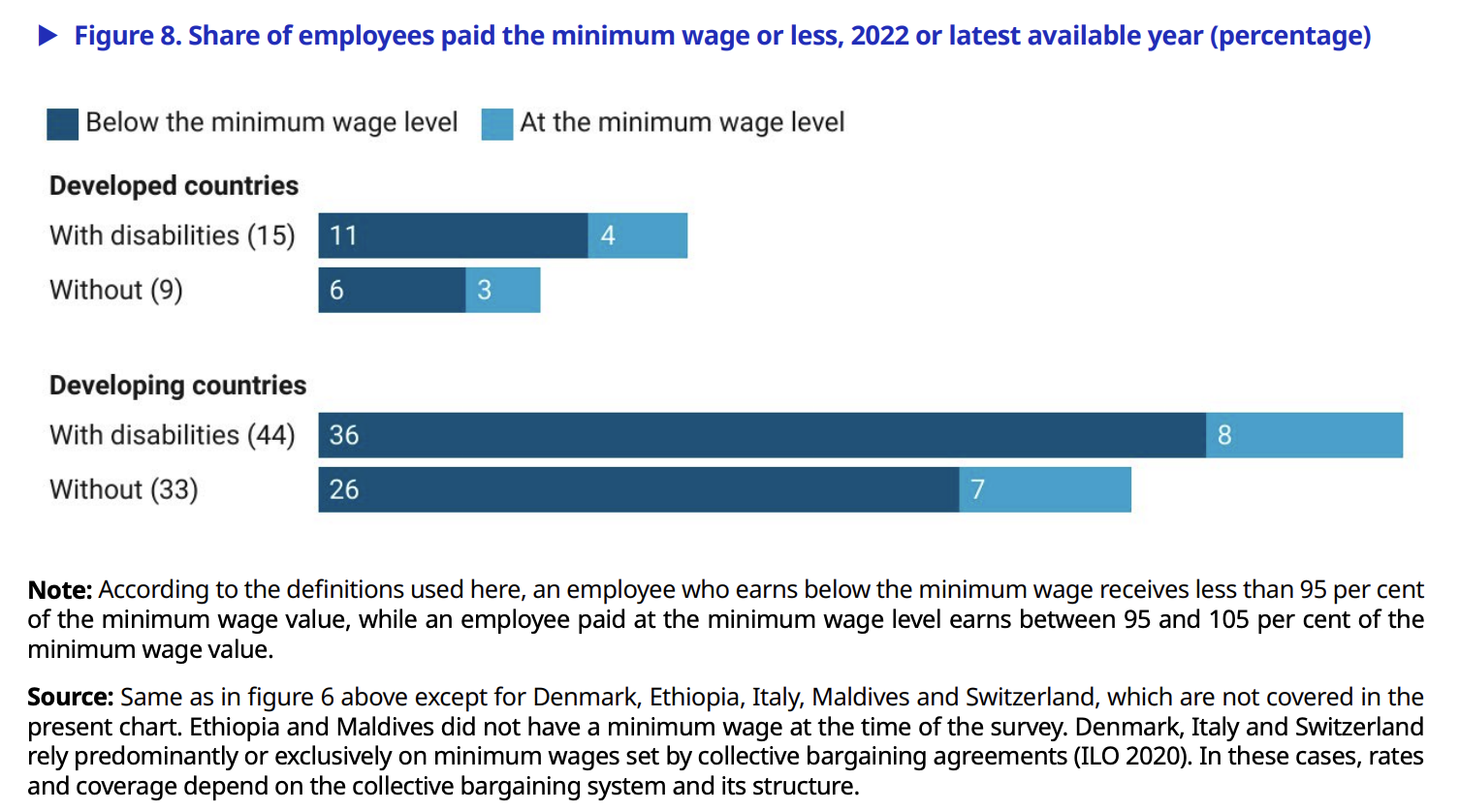
Three-fourths of pay gap 'unexplained,' report says

Employees with disabilities are earning 12% less per hour than their counterparts without disabilities, with the pay gap growing in low- and lower-middle-income countries.
This is according to the latest working paper from the International Labour Organisation (ILO), which analysed data across 30 countries to look at the wage outcomes for people with disabilities.
It found that the average disability pay gap reaches 26% for low- and lower-middle-income countries. On the other hand, the average disability pay gap in developed countries is nine per cent.
According to the report, nine per cent of the 12% average pay gap across the world cannot be explained by human capital determinants and occupations.
"Three-quarters of that gap is not explained by differences in terms of educational attainment, age, and occupational category," the report stated.
This is also the case for 11% of the disability pay gap in low- and lower-middle-income countries, and for five per cent in developed countries.

Source: ILO
"A multiplicity of factors may lie behind the unexplained pay gap between people with and without disabilities, as it reflects all relevant dimensions not considered in the econometric decomposition of the raw pay gap," the report read.
"Among these factors, previous studies have highlighted possible limitations to the productivity of people with disabilities as a result of a mismatch between their capacities and the requirements of their jobs; trade-offs between greater job flexibility or workplace accommodations for workers with disabilities and the level of their wages; and discrimination against this population group."
Meanwhile, the report further uncovered that women with disabilities have it worse.
In 14 countries where such data is available, the report discovered a six per cent gender pay gap between women and men in developed countries, and a five per cent gap in developing countries.

Source: ILO
The report said minimum wages may have a role in tackling the disability pay gap across the world.
"As people with disabilities tend to be at the lower end of the wage distribution, minimum wage policies can be a key tool in reducing the pay gap vis-à-vis people without disabilities," the report read.
"Moreover, the relatively large share of workers paid at or below the minimum wage level among employees with disabilities illustrates that population group's higher exposure to minimum wages, even though only some of them are actually paid at the minimum wage rate."
The report, however, noted that 11% of people with disabilities in developed countries are paid below the minimum wage.
This is also the case for 36% of people with disabilities in developing countries.

Source: ILO
According to ILO, factors that may explain the over-representation of workers with disabilities among employees paid below the minimum wage include a weaker enforcement of policies and possible legal exemptions from minimum wage regulations.
The ILO said its Minimum Wage Fixing Convention, 1970 (No. 131), and the Minimum Wage Fixing Recommendation, 1970 (No. 135), provide a framework for the implementation of minimum wage regulations with a broad coverage.